CDM Final
1/29
There's no tags or description
Looks like no tags are added yet.
Name | Mastery | Learn | Test | Matching | Spaced |
|---|
No study sessions yet.
30 Terms
choice
selecting from 1 of 2 options
distinct from a decision (special case of choosing what to do)

rational choice
what a normative model of choice should look like
what should people do
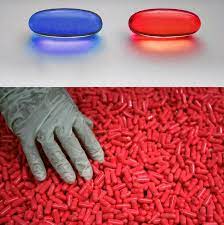
utility
how preferable or desirable a person finds a particular choice (subjective)
is also the numerical expression of a given person’s preference
[term] function is concave in a safe decision
![<p><strong>how</strong><span style="color: yellow"><strong><em> preferable or desirable</em></strong></span><strong> a person finds a </strong><span style="color: yellow"><strong><em>particular choice </em></strong></span><strong>(subjective)</strong></p><ul><li><p>is also the <strong><em><mark data-color="purple" style="background-color: purple; color: inherit">numerical expression</mark></em></strong> of a given person’s preference</p><ul><li><p><span style="color: #eaa6ff"><strong><em>[term] function </em></strong></span><span style="color: #eaa6ff"><strong><em>is concave in a safe decision</em></strong></span></p></li></ul></li></ul><p></p>](https://knowt-user-attachments.s3.amazonaws.com/a8b76c53-3a6c-4752-bd91-218c2967c9e0.png)
quantification
people should express any preference and call that the utility
rating something on importance on a scale from 1 to X
principle of expected utility theory
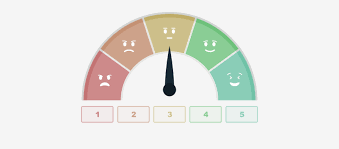
completeness
people can always state a preference for one of two outcomes, or that neither are preferred
principle of expected utility theory
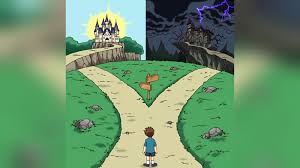
transitivity
if A is preferred to B and B is preferred to C, than A is preferred to C
principle of expected utility theory
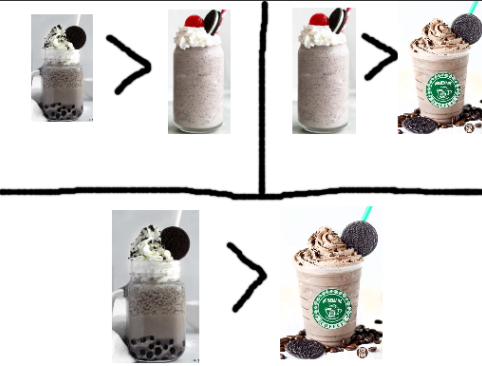
maximization
the goal of a choice should be to maximize utility
principle of expected utility theory
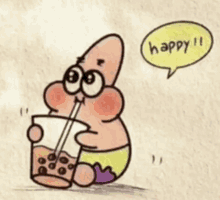
classical theory of rational choice
we already have knowledge of all options and their consequences
people are omniscient
we can already do every calculation to arrive at an optimal choice
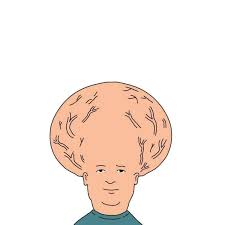
expected utility
the anticipated desirability of two choices/gambles
example: 30% probability of rain and a 70% chance it will not rain
carrying umbrella and it rains: 4
carrying umbrella and it doesn’t rain: 2
leave umbrella and it rains: -5
leave umbrella and it doesn’t rain: 5
math process ⤵
EU (carrying umbrella) → (0.3 x 0.4) + (0.7 x 0.2) → (1.2) + (1.4) = 2.6
EU (leave umbrella) → (0.3 x -0.5) + (0.7 x 0.5) → -1.5 + 3.5 = 2
add the two results up to get the expected utility, choose the result with the highest number (carry the umbrella)

bounded rationality
choice-making should be bounded by human limitations
achieved by being adaptive in making said choice
especially important in natural environments
people have limited access to information and limited computational abilities

adaptiveness
choices with [this] don’t need to lead to the best possible situation, instead only need to be good enough (satisficing)
building knowledge is very costly (in time, energy, etc) and it won't be worth it to expend it
can explain heuristics → are usually wrong, but are ‘good enough’
![<p><strong>choices with [this] </strong><span><strong>don’t</strong></span><span style="color: yellow"><strong><em> need to lead to the best possible situation</em></strong></span><span><strong>, instead </strong></span><span style="color: yellow"><strong><em>only need to be good enough (satisficing)</em></strong></span></p><ul><li><p><span><strong><em><mark data-color="yellow" style="background-color: yellow; color: inherit">building knowledge is very costly</mark></em></strong> (in time, energy, etc) and it <strong><em><mark data-color="yellow" style="background-color: yellow; color: inherit">won't be worth it to expend it</mark></em></strong></span></p></li><li><p><span>can explain heuristics → are usually wrong, but are ‘good enough’</span></p></li></ul><p></p>](https://knowt-user-attachments.s3.amazonaws.com/e34cf48b-7500-4138-aba8-c61a03a13fc4.png)
choice overload effect
the more choices someone has, the more difficult it is for them to make a decision
likelier to happen when . . .
items are unfamiliar
items are difficult to compare (very simplistic)
the person is under a time constraint
Iyengar, Lepper: people offered free samples of 6 or 24 jams at the store
people offered 6 samples bought more than people offered 24 samples

nudge theory
nudges are implicit initiatives that do not impose significant material incentives or disincentives (subsidies, taxes, fines, jail time)
ex: increasing quantity of healthy foods at a grocery store is not a nudge because it changes the available options and thus the decision they have to make
a nudge would be having healthy food near the front of the store and unhealthy food at the back of the store
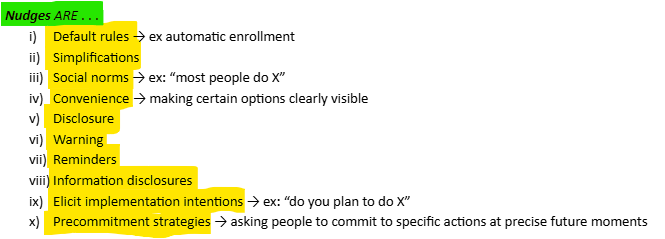
libertarian paternalism
uses nudge theory to help people make choices in a way that help them do what can actually achieve their goals (nudge theory)
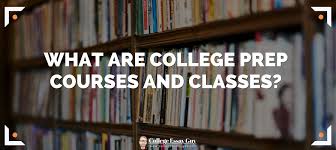
choice architecture
the environment in which people make decisions (nudge theory)
people making those decisions are choice architects
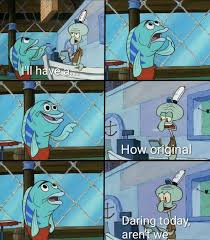
paternalism
implicit interference in the life of another person without their knowledge or consent (nudge theory)
believed that the interference will leave the person more well-off
problematic because the person interfering can be mistaken and the subject not fully informed
common in government
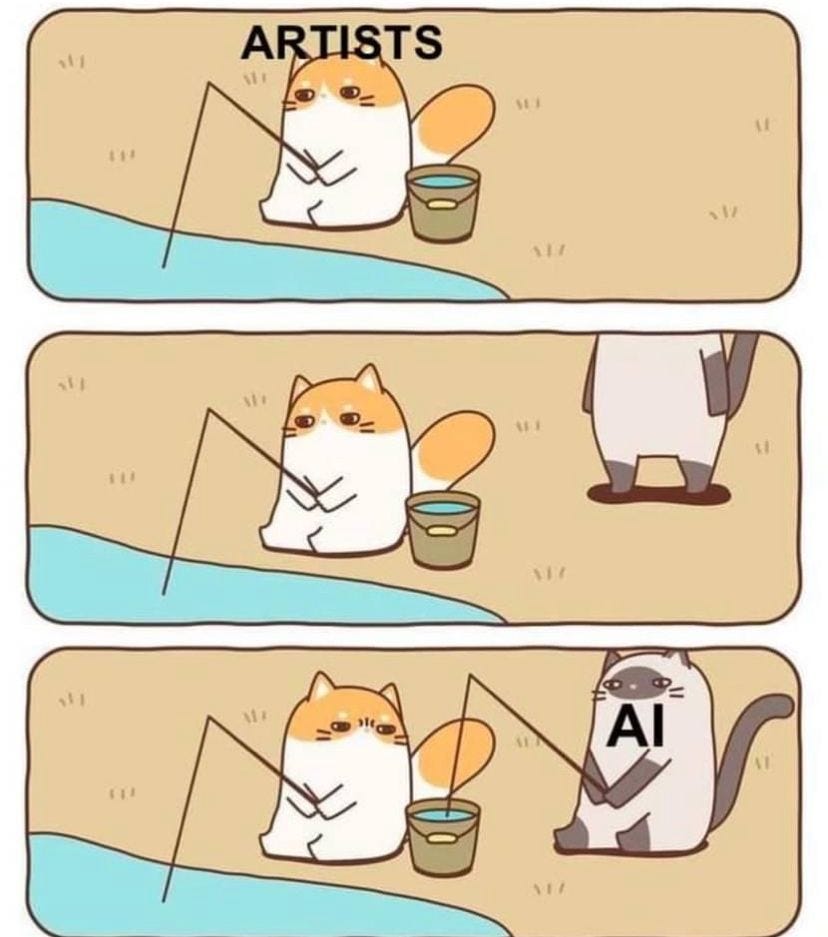
Gonclaves et al
group of researchers who tracked grocery store’s customers for amount of produce purchased (nudge theory)
arranged from soft (<4) to hard (10+) buyers
displayed ads in store praising hard buyers, added “and you?”
results ⤵
soft buyers: produce sales jumped 59%
medium buyers: jumped ~20%
hard buyers: jumped 8%

Dai et al
group of researchers who did the vaccine study (different text reminders for Walmart shoppers to get their flu vaccines)
ownership language (“flu vaccine is waiting for you!”) boosted vaccination appointments by 95%
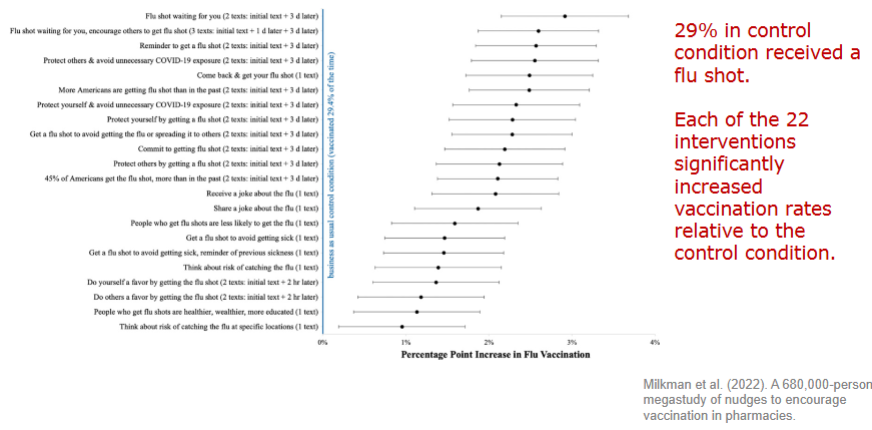
displacement effect
people going somewhere else to do something that a nudge is telling them not to (nudge theory)

nudges can be beneficial because
. . . they make the right thing easier to do more than they make it impossible to do the neutral/wrong thing (nudge theory)
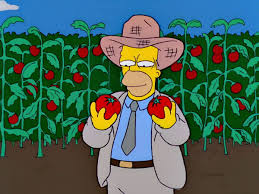
criticisms of nudge theory
nudge theory has some drawbacks because of . . .
consent → vast majority of nudges are done without the target pop’s behind-the-scenes knowledge
non-educative nudges are covert and/or sneaky, so they should have a clear right to opt-out
people may still be unaware of how they are influenced by nudges whether or not there is an opt-out option
profittering → some nudges are done to promote thoughtless behavior and/or profit for the self/company instead of being done to make the right thing
non-educative nudges are an insult to human agency (ex: convenience, rules)
they allow people to choose in theory, but they take advantage of the fact that people don’t have the mental energy to think about their choices
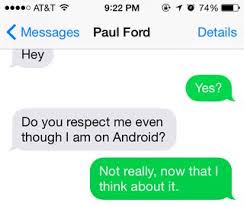
factors of good nudges
good nudging should include (Thalen et al):
transparency → letting public know who is doing the nudging and why
choice options → not manipulating the options to not create preference for a certain choice
consent → telling the public that the nudge is a nudge
considerable thought into how the nudge will improve public welfare
care to avoid token nudging
care that sources used are up-to-date and replicable

token nudge
a nudge intended to create an illusion of improvement as a substitute for systemic improvements

fair gamble
a gamble with an expected value of 0 (choice theory)
people avoiding these illustrates risk aversion
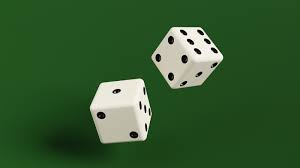
framing effect
illustrates how the wording of a situation affects a decision that people make based on it
measured with gain framing and loss framing
has one of the most replicable effects in psych research

gain framing
situation described in terms of getting something (choice theory)
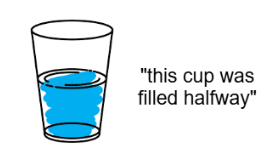
loss framing
situation described in terms of losing something (choice theory)
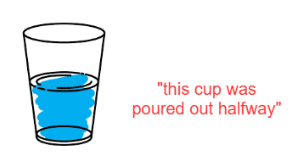
risk aversion
general unwillingness to engage in activities in which one might lose something (choice theory)
measured by the utlity function (start point = $0)
function is concave in a safe decision
measured by usefulness (ex: $1-$2M more useful than $8-$9M)
more money = less utility (“oh there’s already a lot”)
certainty is treated as having extra utility beyond tangible (ex: monetary) value
